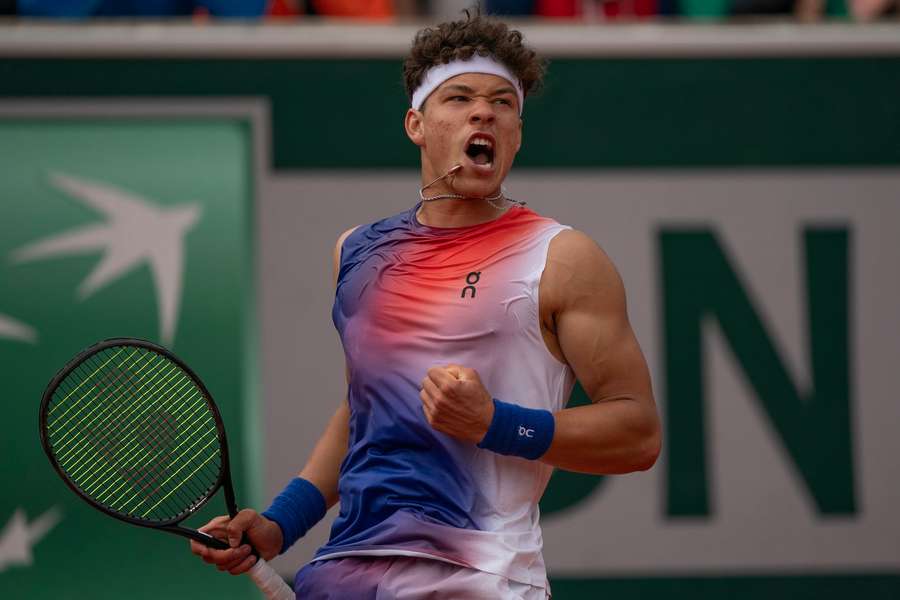OPINION: College tennis is more than a pathway to the tour, it's the best education

Increasingly, the tennis landscape is seeing a pathway of teenage players leaving for the United States on athletic scholarships. It used to mean the end of professional tennis. I've heard it myself: "You'll be ruined there, you won't be able to go to pro tournaments and score points. You'll miss the train, you'll be too old to play after you graduate." That's what they used to say.
American tennis player John Isner, a 2007 graduate of the University of Georgia, was considered an exception, but in today's climate, he may have been a pioneer. He graduated, turned pro and made it all the way to number eight in the ATP world rankings.
The numbers above clearly indicate that college tennis is now a legitimate ticket to the professional ATP and WTA circuits.
Take a look at Danielle Collins, currently the 10th player in the WTA world rankings. Off the court, a smiling, friendly professional who has her head on straight and knows what she wants. Unlike today's 16-year-old hopefuls, she didn't actually come to the pro circuit until she was 23 and after she had graduated from college. But she switches into a fighting mindset on the court and is capable of producing anything to win.
I notice the confident and self-assured demeanour both on and off the court that most American college graduates have. They are simply personalities who do not crumble under pressure, quite the contrary. Isner, for example, recalled his turbulent beginnings like this. "I vividly remember some matches when I could barely swallow how nervous I was because I wanted to win so badly." Believe me, from personal experience, I can relate to that.
The college graduates' experiences at tournaments are then compounded by the realization that they are not playing matches for themselves but for a team, representing the university. They are being watched by full stands not only on small courts, but in some cases in large arenas, and sometimes their matches are being broadcast live across the United States.
There is no better preparation for the professional ATP and WTA circuits.
McEnroe was once one of many
It used to be common for tennis players to study. American legends such as Arthur Ashe, Jimmy Connors and John McEnroe spent at least a year at universities before turning pro. That tradition disappeared in the 1980s.
Players wanted to get on the Tour as soon as possible as they chased the prospect of money, which began to flow into the world of sport in ever-increasing quantities.
Tennis players are also students at American colleges and have to responsibly follow a study plan. Even though university tennis rivalries are very prestigious, they will not let players play without fulfilling their study obligations.
The daily routine at college is no cakewalk. They move from classes to the court and from the court often back to class, then to training or the gym. In the evenings, they do homework and study. This teaches discipline, tenacity and perseverance.
The training volumes are considerable and, as a result, only the strongest and toughest survive. It is a great pity that, although universities often have 'unlimited possibilities', injuries and aches and pains are in most cases dealt with by painkillers and ice and only suppress the causes of the difficulties. This was my case back in the Czech Republic. American universities simply have no shortage of applicants and when someone drops out, they recruit someone else.
However, an important factor, which in my opinion is behind the great results of university players, is the opportunity to train daily with up to 10 different tennis players of similar quality. They tend to be part of a team.
You play a lot of competitive matches and use the sports facilities on campus with qualified coaches, psychologists and personal tutors. The dedication that comes from the regime can be seen today, for example, in Ben Shelton, the 15th player in the ATP rankings.
Shelton may now study online, but the university environment has shaped him. I like the way he enjoys tennis. When he played doubles with Alexander Bublik in Madrid, it was a guaranteed show for the crowd.
College grads will be even better on hard court
At Roland Garros, nine former American university students have already advanced to the second round. In addition to Shelton and Collins, there were also Francisco Cerundolo and Emma Navarro.
Given that American university tennis is played on hard-court surfaces with a few exceptions, I would venture to guess that more of them may make it to the second round at other Grand Slams and many of them will have excellent results.
A lot of players would like to turn pro but feel that they are not mentally ready to go around tournaments every week and fight for small points in the ATP rankings after their junior career. Not to mention the financial aspect.
That's why going to an American university seems to be a viable alternative, and more and more players, not only from the US, are doing it. One example is the British Cameron Norrie, a former top 10 player, currently 33rd in the ATP world rankings.
In tennis nowadays, it's not the quality of the strokes that makes the difference. Everyone can play forehand and backhand, but the head is an important part of success. It seems to me that players who go through the American system are confident, mature, composed and focused. All of this comes through in their play and results.
The fact that they have a backdoor in the form of a college degree also plays a big part, and if they don't do well tennis-wise on the professional circuit they won't capitulate from it, and it doesn't really matter when the breakthrough and success comes. Shelton came through right out of college, while Chris Eubanks didn't get his break until six years later.

